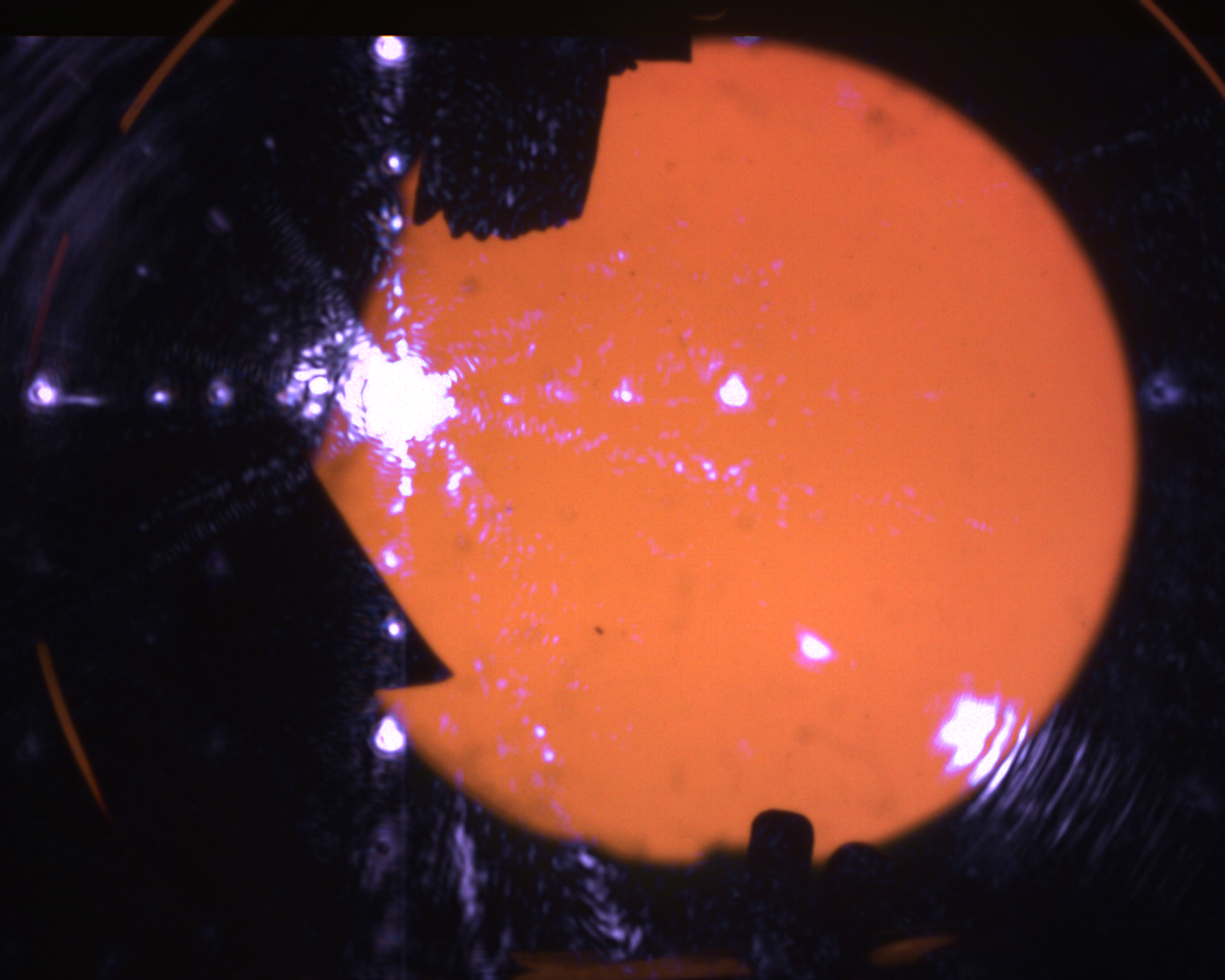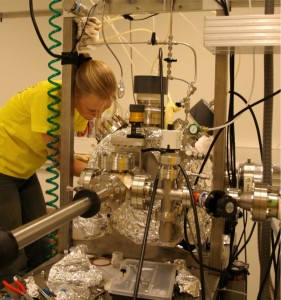Research
Rydberg matter of Hydrogen and energy. Is a strange cluster phase of Hydrogen made only by Rydberg atoms of Hydrogen. Research was started by Leif Holmlid Gothenburg University at the end of last century and strangely is still in 2020 very little researched by the scientific community. It behaves very mysticly and ghostly. The picture shows laser excitation of the Hydrogen cluster phase as it is streaming down from the catalyst from above. Nonlinear diffraction pattern is seen from the Rydberg matter cloud. This state of Hydrogen could have links to the very obscure excess heat results that have been observed in cold fusion experiments since 1989. https://iscmns.org.
Thin film growth and characterisation. Is the fundament of every solid state physics laboratorium in the world. It is important to be able to grow new material in a thin film form and to perform rigorous structural characterisation before measuring other intended physical properties. University of Iceland has since 2005 excellent facilites to perform thermal evaporation, sputtering, CVD and MBE growth of thin film materials. Structural characterisation is performed with XRR, XRD, Ellipsometri, AFM and SEM. Recently HiPIMS has been added to the flora of possible sputtering methods that we can perform with our three sputtering chambers available for us too use. Every year a number of thin film growth papers are published just for the sole reason to study the science of thin film growth. This has been very fruitful work with my main co- workers; Friðrik and Jón Tómas.
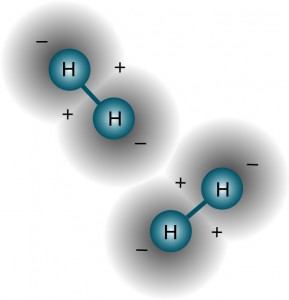 Hydrogen in Metals. Was the main research subject of my PhD thesis work at the physics department Uppsala Sweden. There I was using wonderful mixture of nuclear solid state physics methods with high energy ion beams and almost chemistry based methods to study the physics and science of hydrogen or protons (3 quarks and an electron) in metals. This was in cooperation with people in Linköping University who did the thin film growth. It was no wonder that I ended up as a post doc there for few years before returning to Iceland 1998. We did basic research in the behaviour of hydrogen in thin film such as superlattice and other nanoscale structures. Hydrogen can be stored high quantity in metals and it has been extensively studied as solution as energy carrier and to help the world in solving its energy problems. Recently LENR low energy nuclear reaction of hydrogen in certain metal hydride nano-structures are starting to indicate exciting possibilities that could end the oil age and start the age of the proton. There will certainly be research activities in that direction in the future.
Hydrogen in Metals. Was the main research subject of my PhD thesis work at the physics department Uppsala Sweden. There I was using wonderful mixture of nuclear solid state physics methods with high energy ion beams and almost chemistry based methods to study the physics and science of hydrogen or protons (3 quarks and an electron) in metals. This was in cooperation with people in Linköping University who did the thin film growth. It was no wonder that I ended up as a post doc there for few years before returning to Iceland 1998. We did basic research in the behaviour of hydrogen in thin film such as superlattice and other nanoscale structures. Hydrogen can be stored high quantity in metals and it has been extensively studied as solution as energy carrier and to help the world in solving its energy problems. Recently LENR low energy nuclear reaction of hydrogen in certain metal hydride nano-structures are starting to indicate exciting possibilities that could end the oil age and start the age of the proton. There will certainly be research activities in that direction in the future.
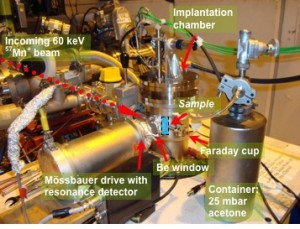
Physics of magnetic defects studied at Isolde CERN Mössbauer spectroscopy is nuclear solid state technique that I have used quite a lot during last five years. This has been done in cooperation with group of people with lot of experience: The Mössbauer Isolde cooperation. The main driver is Haraldur Páll Gunnlaugsson at Aarhus University Denmark. Every year we go on a vacation to CERN Isolde lab for 1 or 2 week stay and enjoy life. The enjoyment is only interrupted with mundane things such as too long working nights, morning tiredness and general state of fussy minds. Usually though things clear up with some interesting results and in the end accepted scientific paper many months later. We will all meet up in Iceland in the end of august 2013 to discuss latest work and plan for the restart of CERN late 2014.

Surface Physics studies at MaxLab LUND Sweden. Large scale research facilities, that is life of physicists theses days. Back in the old days you could stay at home and make your own instruments and make a discovery/measurement. Now to stay at forefront/uptodate you have to apply for scientific trip to research Mekkas/Churches. There you will be allotted a slot of week where life is goverened as a stay in convent. Your experiment has to be finished in one week and all your equipment has to be working 100%. That never happens it is not a convent! Still we have managed to do some scientific work in surface physics and learned a lot during these times we have visited MaxLab. Now MaxLab IV is being built which will give more exciting opportunities in the future for solid state physics and life sciences. We plan to go there late 2013 again.
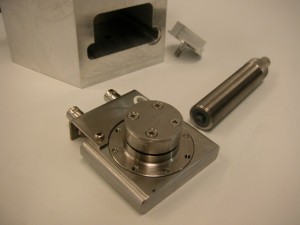
Nanoscale imaging and processing using STM. In 2001 Unnar Arnalds my master student built the first STM scanning tunnelling microscope in Iceland. The microscope observed and took the first pictures of an icelandic atom. We made of course the icelandic state TV evening news. Roughly 1100 year after some vikings from Norway and Celtic woman from UK settled Iceland we could finally see some atoms, our founding pieces. This project had also grander scheme, or to solve one of the greater technological problems that is still unsolved: How to write with atoms and build some fine things of atoms, tens of atoms, 100 atoms at a time. We were not successful, the problem is still there. It is only possible to build things, one atom of a time with a STM. But we tried! I am still thinking about this problem, it is like Fermat's last theorem, but that problem is solved, but mine is not.
